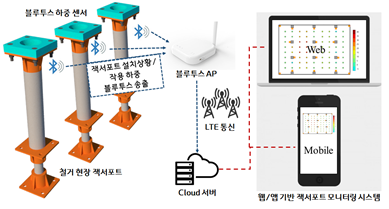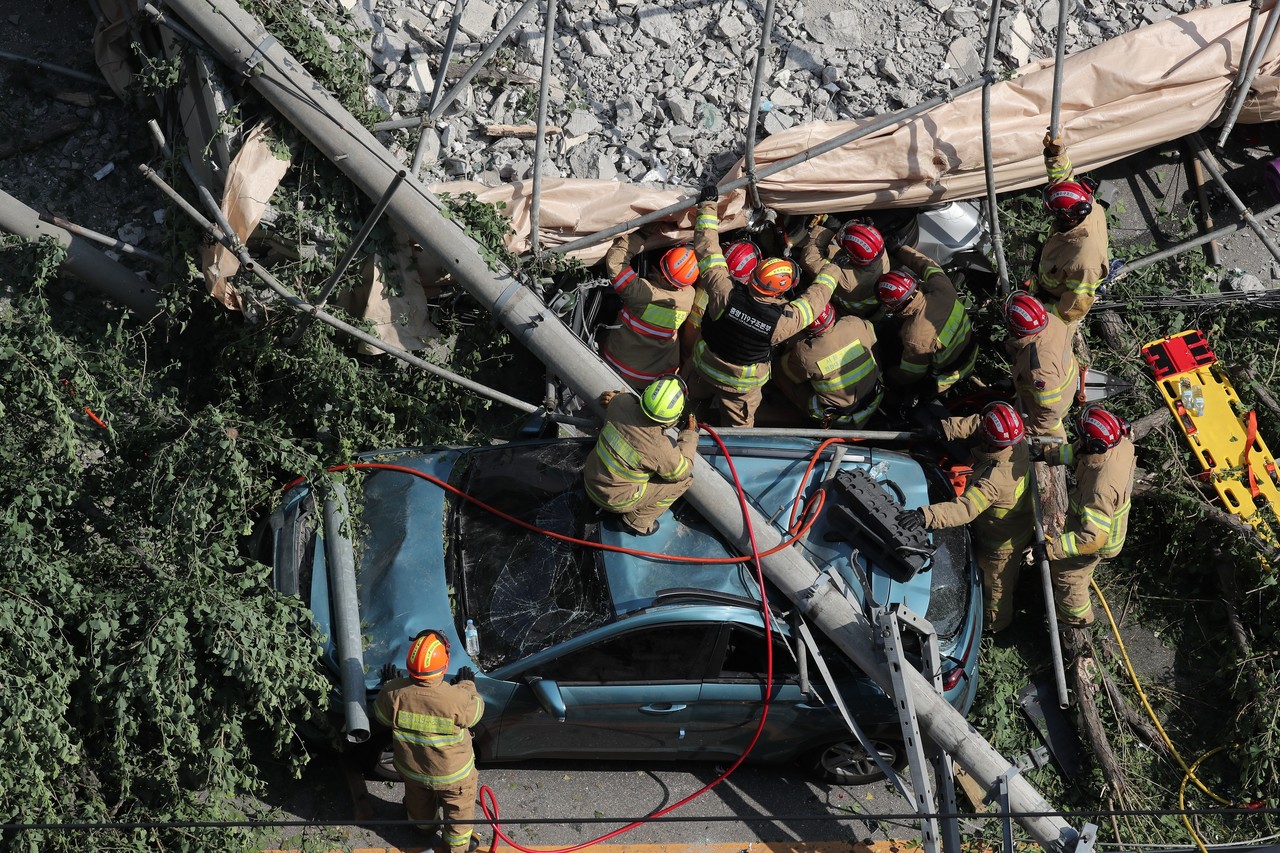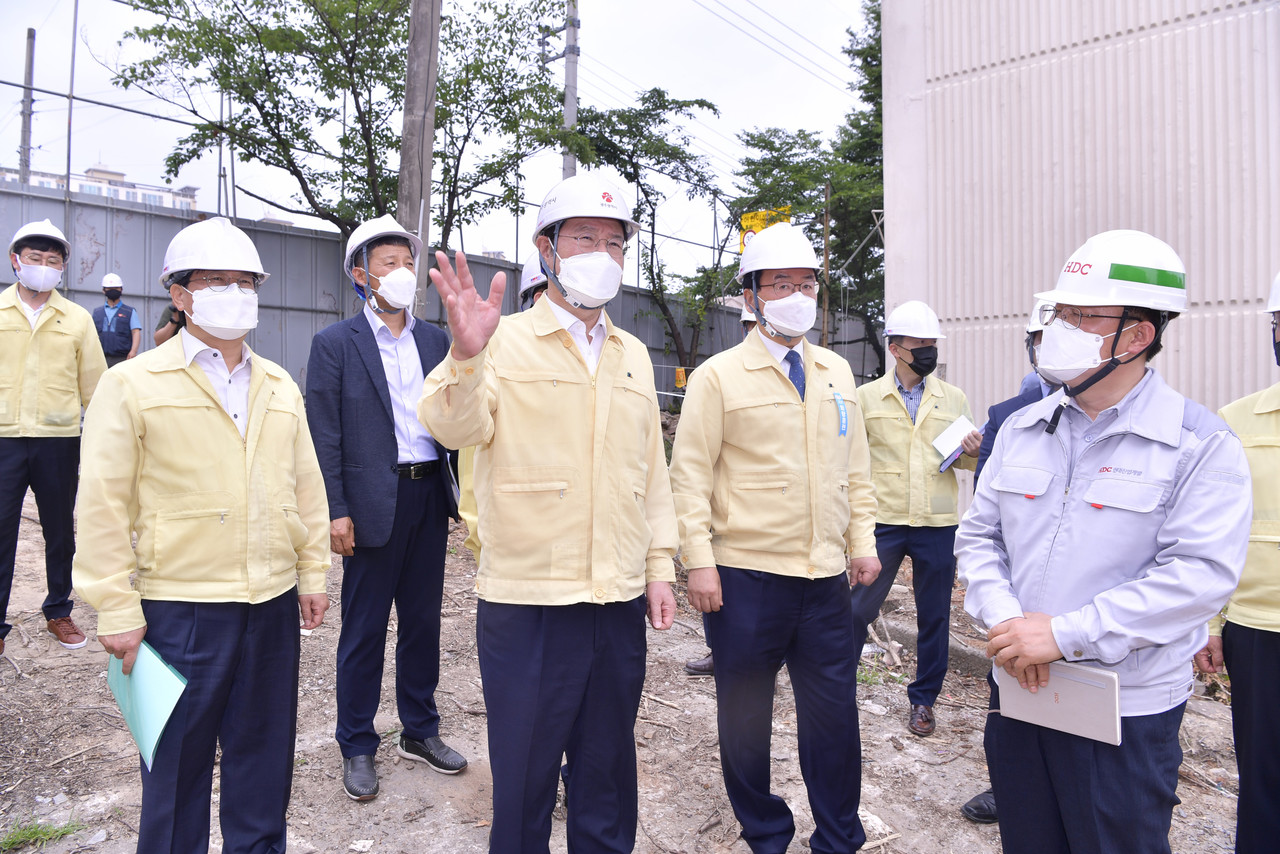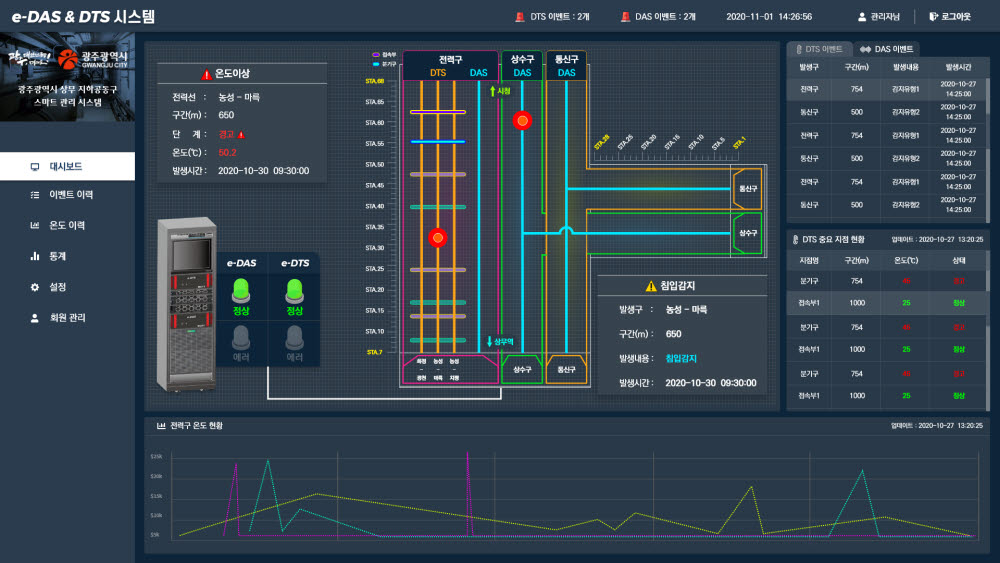NEWS
Writer : enitt
Date : 2022-04-12 17:18:05
Hits : 1697

At 11:37 a.m. on the 9th, about four hours before the demolition of the redevelopment area in Hak-dong, Dong-gu, Gwangju,
collapsed. With much of the side of the building cut off, excavators are dangerously demolishing it on top of the embankment. (Photo = News 1 provided).
It is argued that the collapse of the demolished building in the redevelopment area of Dong-gu, Gwangju, which claimed nine precious lives, could have been detected in advance. When the collapse of Jamwon-dong, Seoul occurred two years ago, Gyeonggi Province began to develop technologies related to monitoring of "Jack Support." The technology is currently being used in some sites, but it is not being distributed nationwide. It is regrettable that if this technology had been introduced in the Gwangju area, the casualties could have been prevented in advance.
In July 2019, the outer wall of the demolished building on the fifth floor collapsed in Jamwon-dong, Seocho-gu, Seoul, killing one person and injuring three others. One of the main reasons for the accident is that there is not enough "jack support" installed to support the load of the building.
In response, Gyeonggi Province has started to develop a system that can monitor in real-time through a mobile phone app for abnormalities in jack support installed at building demolition sites to distribute load on the upper part of the building since 2019. The intention was to prevent collapse accidents such as the "Jamwon-dong collapse accident" in advance and minimize damage.
When more than a certain level of pressure is detected through vibration-proof rubber with built-in pressure sensors, the Bluetooth beacon operates to notify whether there is an abnormality through a mobile phone app. The jack support is a temporary structure that secures the safety of a building demolition site that is at risk of collapse as a support for dispersing the load on the upper part of the building.

Conceptual diagram of the jack support monitoring system (photo = provided by the Institute of Next Generation Convergence Technology).
The system can determine in real time the location and number of jack supports as well as the presence or absence of abnormal loads. In particular, it is possible to prevent poor safety management, such as not installing jack support or installing less than planned through the system. It is possible to check whether there is an abnormal load that occurs suddenly.
Some point out that the disaster could have been prevented in advance if such a system spread quickly in Gwangju, where redevelopment work is underway. A 51-year-old citizen, identified only by his surname Kim, said, "It was a disaster that could have been prevented if we monitored thoroughly with beacon technology."
At the demolition site, it is common to install "Jack Support," a support to secure structural stability, but it was found that the dismantling plan of the redevelopment area in Dong-gu, Gwangju, where the recent disaster occurred, did not include this.


